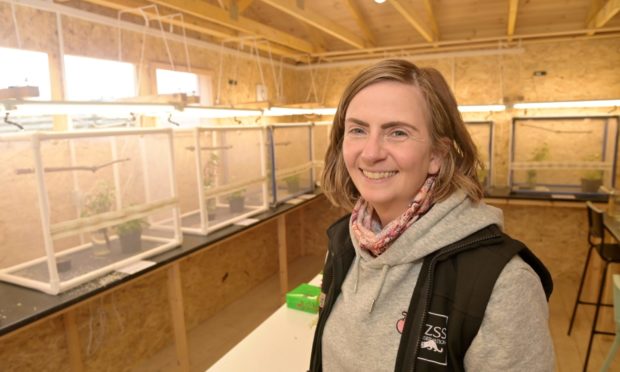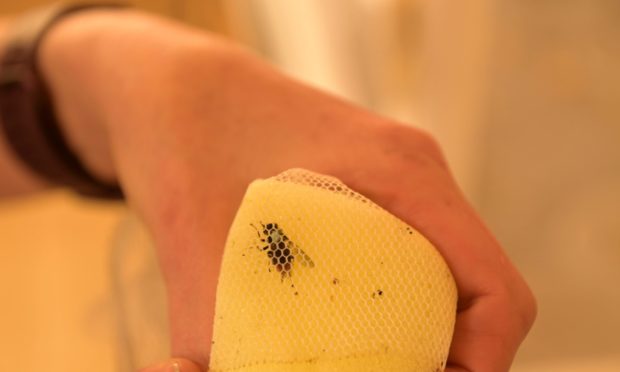Their time is limited, but they are making a valuable contribution to the future of their species in the meantime.
Critically endangered pine hoverflies have successfully mated at the Highland Wildlife Park and have started laying eggs.
It is another indication that the park’s breeding programme is heading for its most successful year.
Pine hoverflies, which play an important role in the ecosystem as pollinators, are one of the rarest species in the UK.
The two small wooden huts that make up the park’s breeding programme’s base now contain more pine hoverflies than are known to exist in the wild in Britain.
The eggs, the size of full stops, represent another success for the painstaking work identifying and matchmaking adult flies to produce future generations.
‘They are saving their own species’
Adults live for only four to six weeks so the time spent on pairing the flies for breeding is critical.
Dr Helen Taylor, conservation programme manager at the Royal Zoological Society of Scotland (RZSS), which runs the park and Edinburgh Zoo, said: “We only have that short length of time to match-make them, get them mating and hope the females lay as many eggs as possible before they all die at the end of the season.
“Whatever we have at that point is what we have to carry through into the next generations. So it is a really crucial time.
“They don’t realise it, but they are saving their own species. If they were not laying at this point we would be very worried. But, as it is, they are laying loads and it’s going really well.”
Female pine hoverflies can each produce around 200 eggs.
But it won’t be until August or September before the team know how many have been laid.
The breeding project has been running since 2019.
In the first year of running a full breeding cycle in captivity 25 adults produced 16 larvae. From those 16 came 170 larvae.
This year 150 pupae have already turned into adults, including 67 females, with another 16 still to come.
Dr Taylor added: “This is the first time we have done this on such a big scale, so we don’t know what the conversion rate of eggs to larvae will be. It will be exciting to find out.
“Once the flies finish the adult season they will die. Then we go into this nervous waiting game as we wait to see how many larvae we end up with.
“It’s looking really positive. Even if the majority convert into larvae it should be very exciting.”
How did pine hoverflies become critically endangered?
Pine hoverflies became critically endangered in Britain due to land use change resulting in the loss of the ancient pine forests.
Invertebrates are in decline globally and the pine hoverfly is so rare in the UK that no one has seen an adult of this species in the wild for more than seven years.
Last month, the Press and Journal was given behind-the-scenes access to the breeding base which is currently going on in an area of the park not open to visitors.
RZSS has plans to build Scotland’s Wildlife Discovery Centre at the site.
It is hoped the visitor and education centre will showcase some of the conservation work it carries out.
Why are these flies so important?
You might not lose much sleep over the demise of a forest fly.
But did you know that the pine hoverfly is also on the list of animals that Scottish ministers consider the most important to biodiversity conservation?

